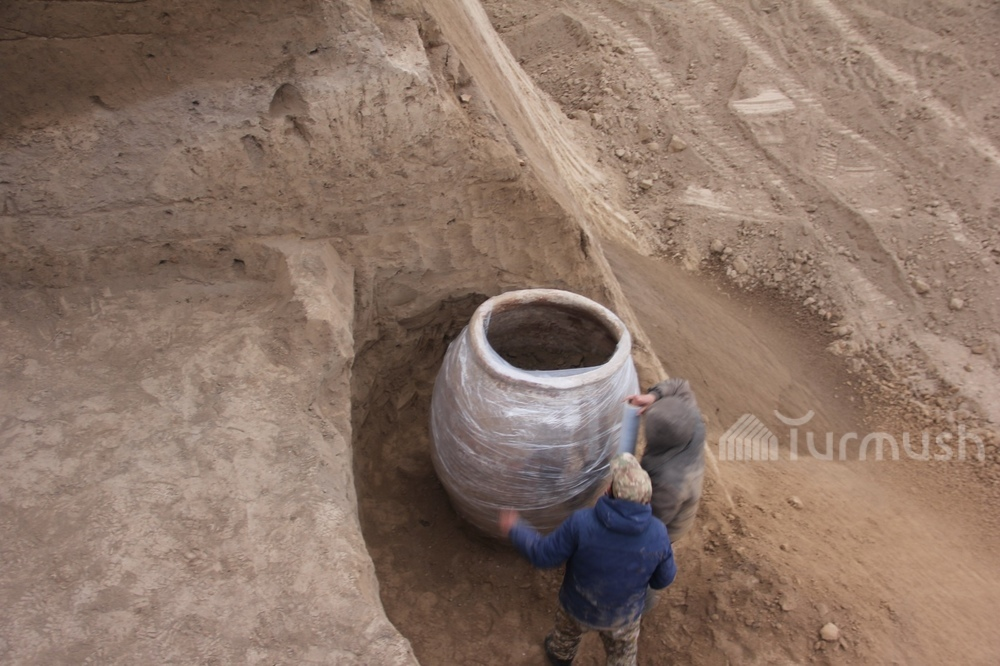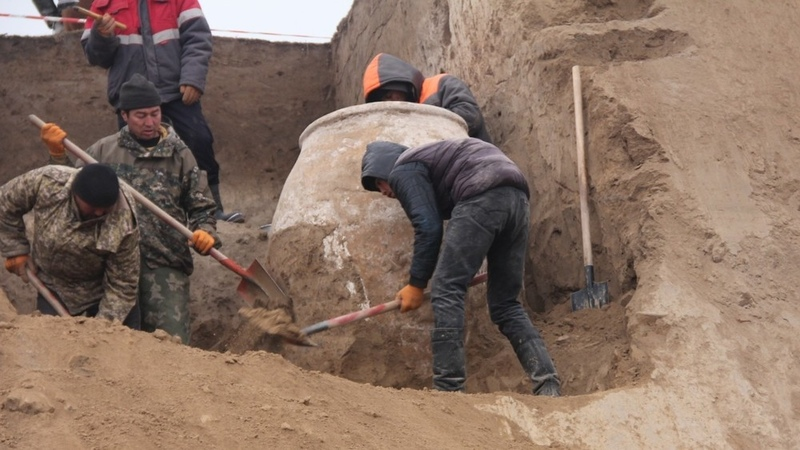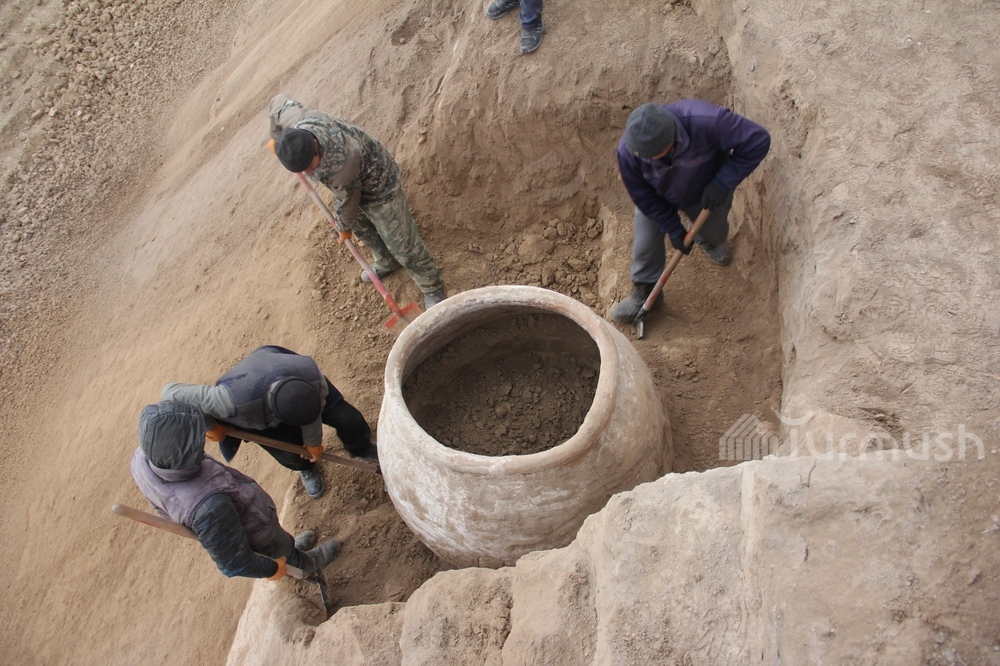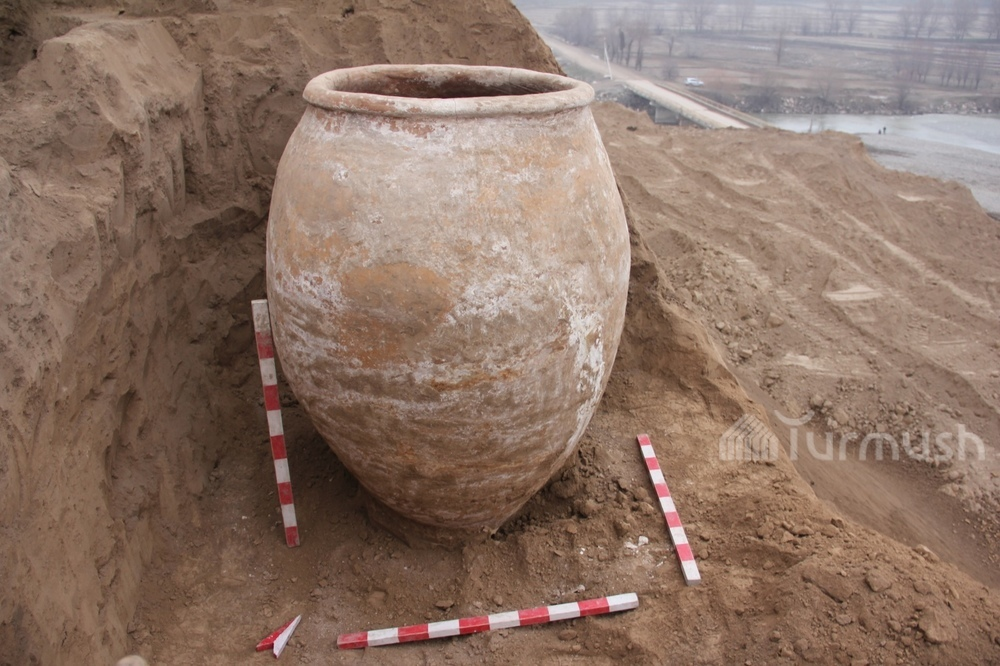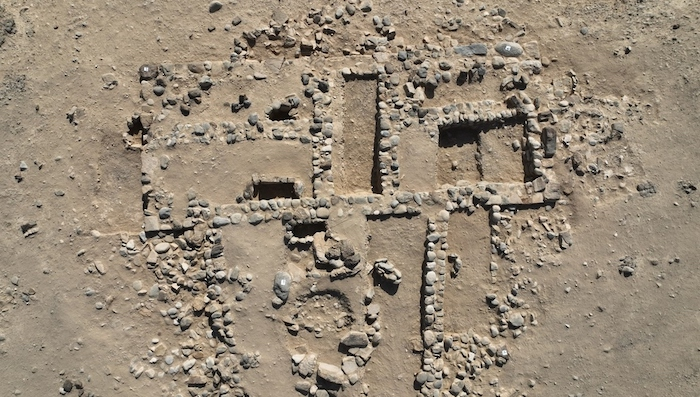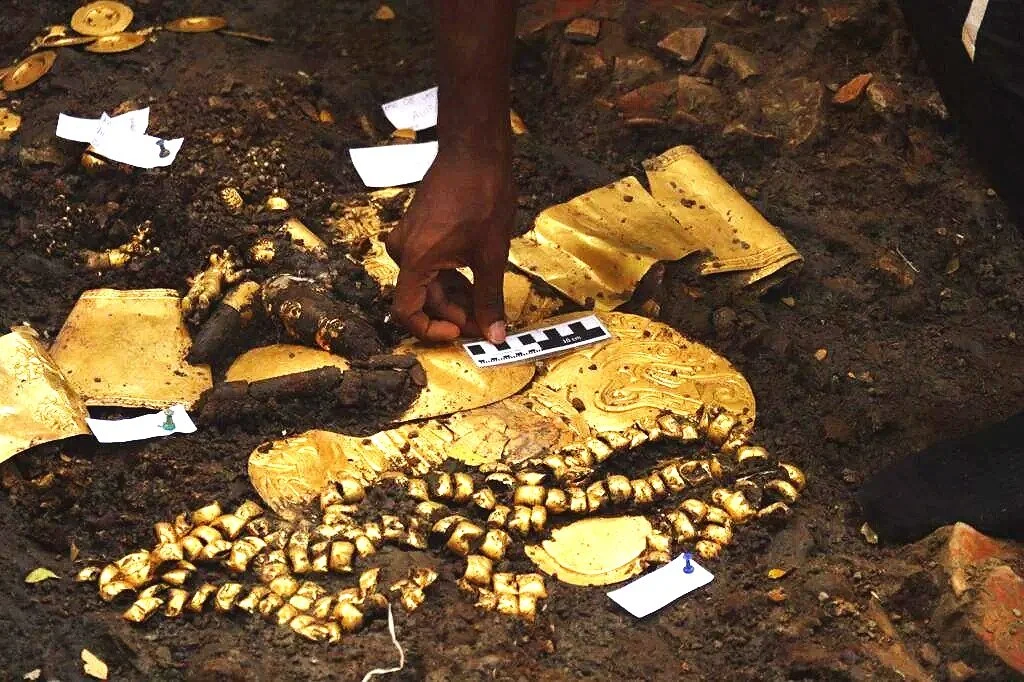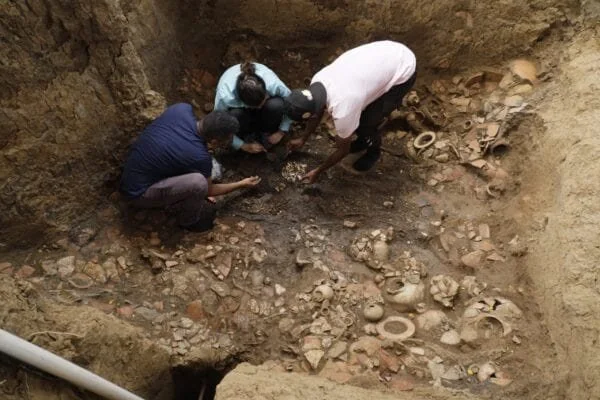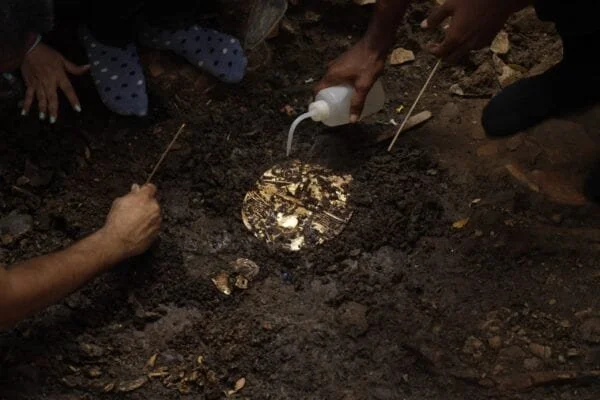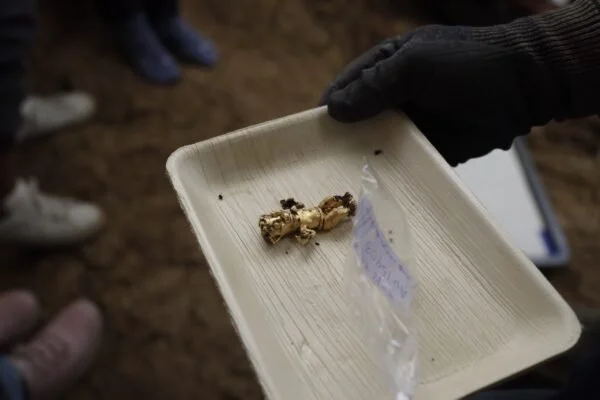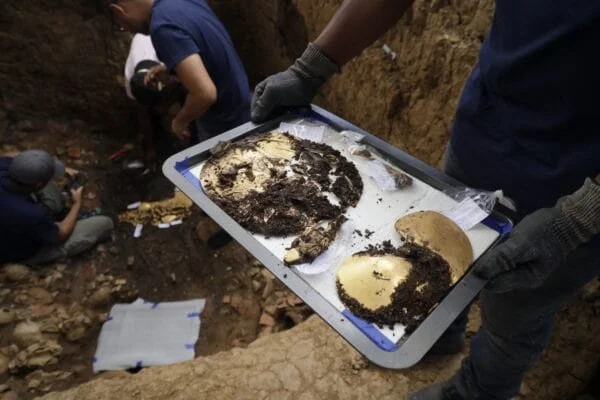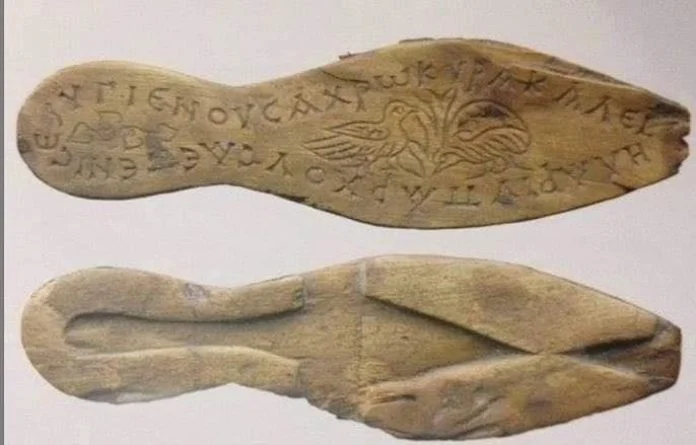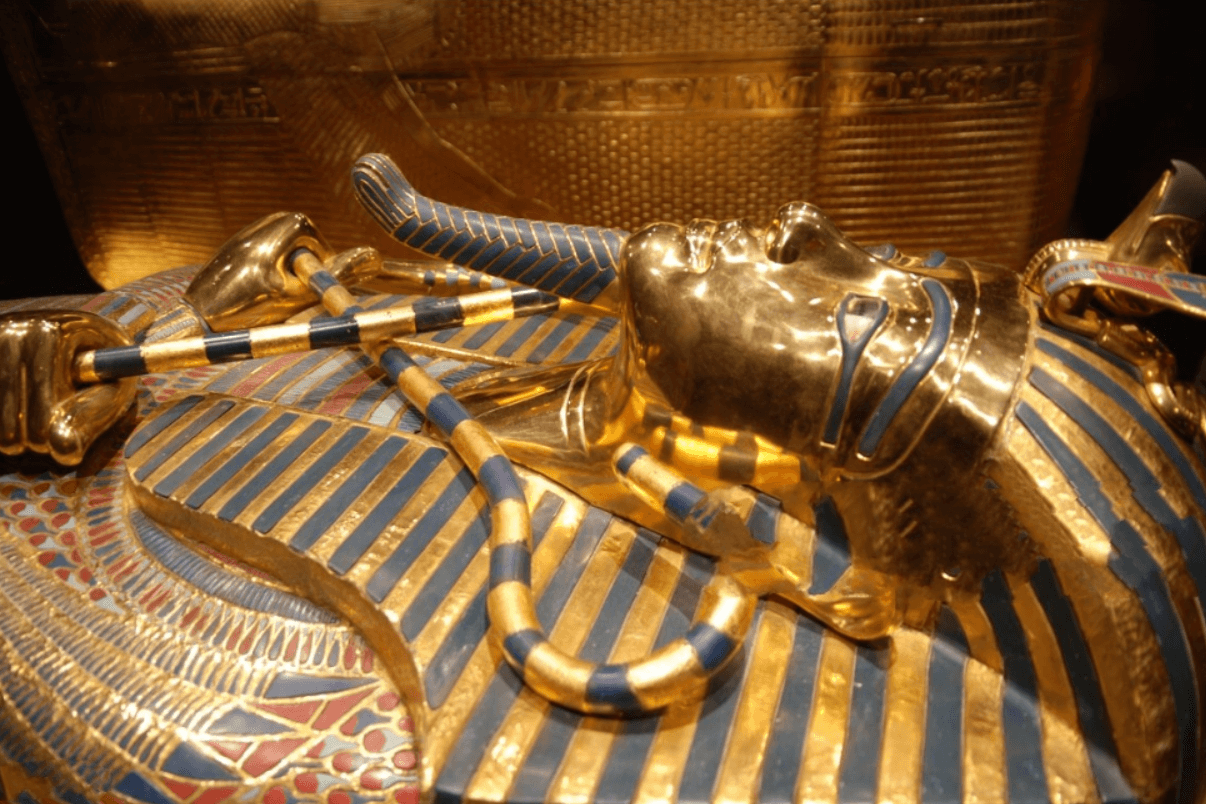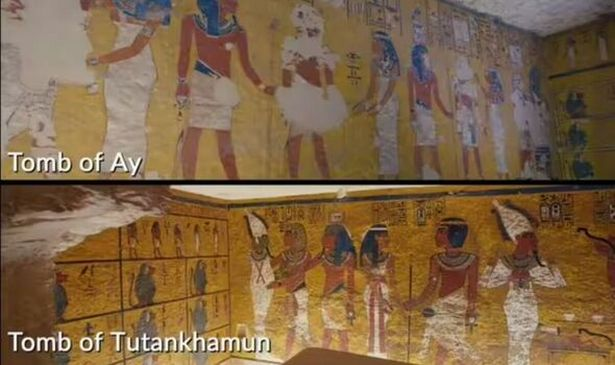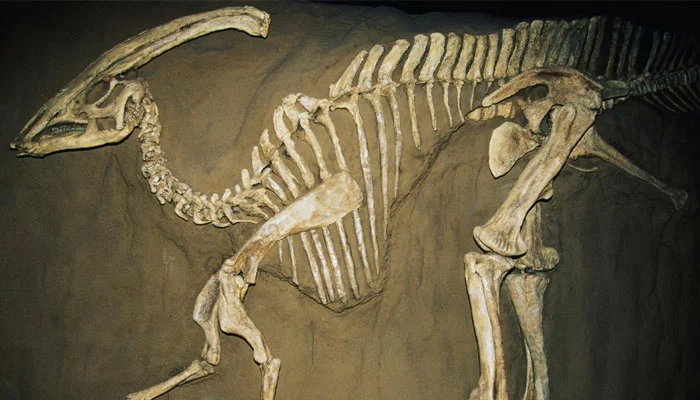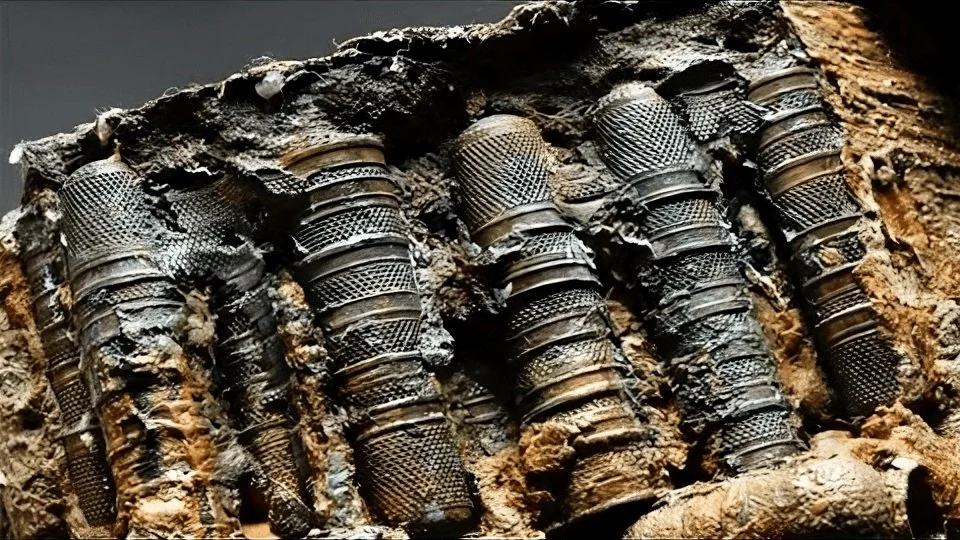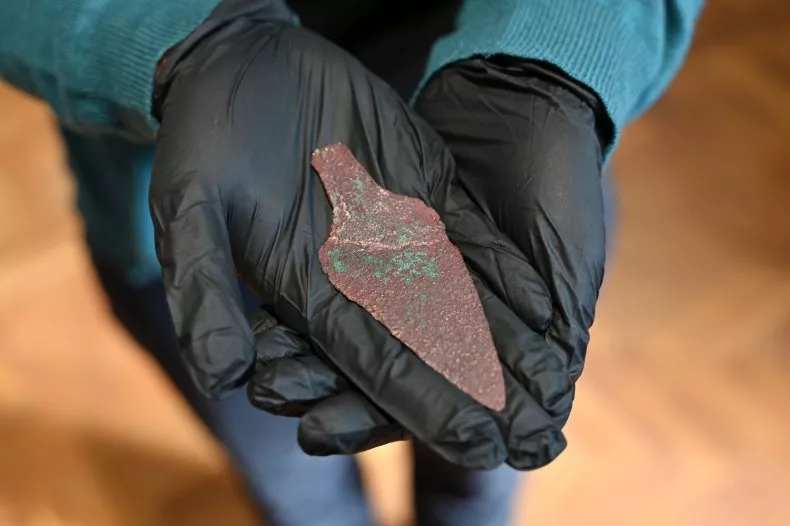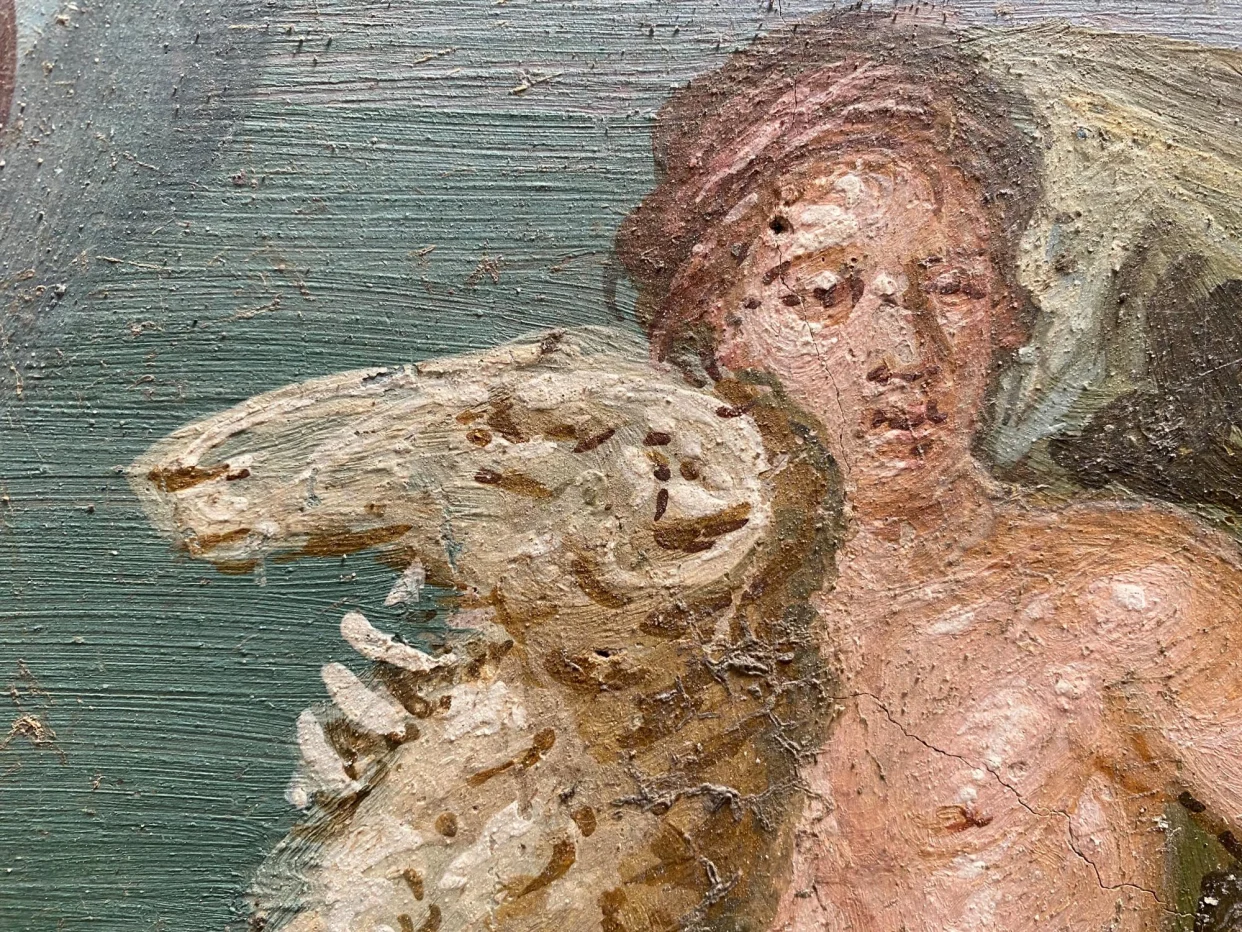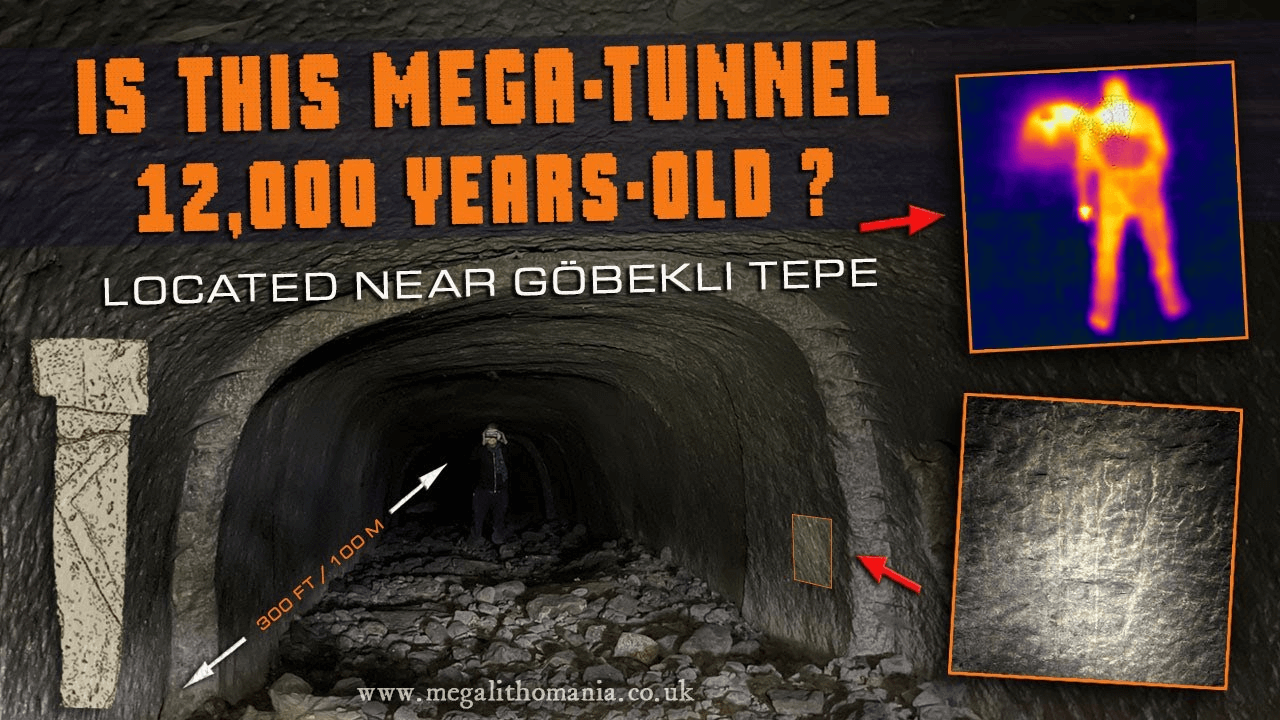During recent archaeological excavations in the Uzgen district of the Osh region, a significant discovery has emerged: a towering clay vessel known as a 'hum,' standing at an impressive height of 1.75 meters. Turarbek Abdyrahmanov, a member of the archaeological team representing the National Academy of Sciences of the Kyrgyz Republic, unveiled this remarkable find.
Under the leadership of Mars Boranbaev, the excavation efforts commenced just 5-6 days prior. On March 1, amidst the careful excavation process, the 'hum' surfaced from the depths, nestled 2.5 meters below ground level. Believed to hail from the 7th to 4th centuries BCE, this artifact remained remarkably intact as it was delicately extracted and transported to the Uzgen Architectural and Archaeological Museum.
"After meticulous cleaning, the 'hum' now awaits further examination as part of our ongoing research endeavors," Abdyrahmanov elaborated. "Already, fragments of clay pottery indicative of the Shoro-Bashat culture have been unearthed, signaling the rich historical tapestry of the region."
Situated in proximity to the Kyzyl-Oktiabr area, where plans for a bypass road are underway, the excavation site holds immense historical promise. As Abdyrahmanov emphasized, the bustling activity near the old city has spurred intensified archaeological exploration, with hopes of uncovering additional relics of antiquity. The 'hum,' towering at 1.75 meters in height and spanning 1.30 meters in width, serves as a testament to the ancient civilizations that once thrived in these lands.
Currently, the archaeological team comprises four dedicated experts and a workforce of 20, diligently unraveling the mysteries concealed beneath the earth's surface.
In tandem with these archaeological endeavors, construction on the Uzgen bypass road has been progressing steadily. Valued at 2.6 billion soms, the road project aims to alleviate traffic congestion in the area, offering a toll route designed for unidirectional travel. Spanning a length of 14.1 kilometers, plans for the bypass road include considerations for constructing either a four or six-lane thoroughfare.
As of the latest update on February 5, development efforts on five sections of the Uzgen bypass road remain underway, marking a harmonious blend of modern infrastructure projects and the preservation of ancient heritage.

